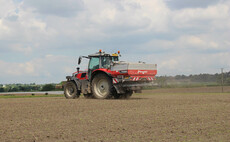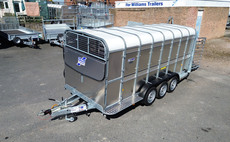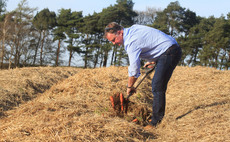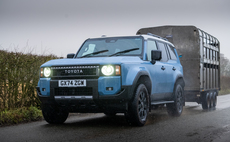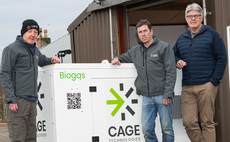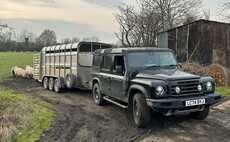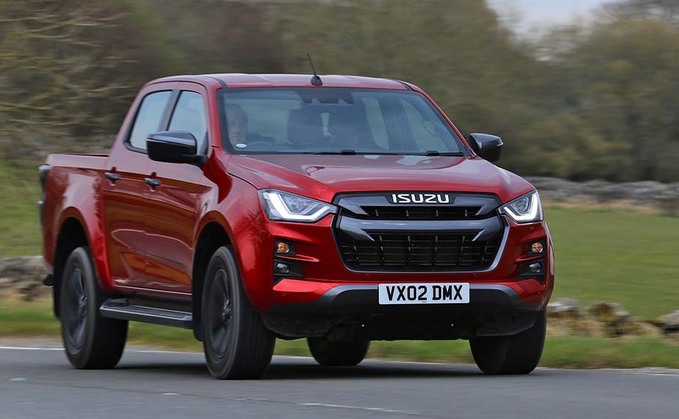
As manufacturers continue to drop like flies, out of the UK pickup market, commercial vehicle specialist Isuzu has launched its latest generation of D-Max pickup, promising more refinement, technology and safety. Alex Heath got behind the wheel of the new models.
Isuzu is currently on a mission to grow its customer base, following the announcement that heavy hitters VW, Nissan, and Mitsubishi are leaving the market. In fact, the Japanese manufacturer has picked up eight of the latter's dealers in recent months, taking its UK dealer network to 110, a good proportion of which are ag machinery dealers too.
The new D-Max range comprises the same model make up, with two- and four-wheel drive single cab options in basic Utility spec. Steel wheel spec is also available in extended and double cab variants. Interior is scant, but it has a vinyl floor lining that can be hosed down. Stepping up the equipment list is the DL20, which replaces the Yukon and is available in extended or double cab. DL stands for diff lock, which is standard on this and all subsequent models.
Then comes the DL40 (replaces Utah spec) and range topping V-Cross (replaces Blade spec), which apart from a few subtle differences, have a nearly identical spec level. The major difference is the external trim colour, chrome on the former and gun metal grey on the latter.
While the range is branded as ‘all new' familiar components remain. It continues to use the firm's 1.9-litre, four-cylinder engine. Delivering 162hp at a raucous 3,600 rpm and 360Nm between 2,000 and 2,500rpm, performance is adequate, but certainly not remarkable. The manufacturer quotes 33.6 miles per gallon on manual models and in practice getting above 30mpg is achievable, without having to be too pedantic with the throttle pedal.
Two transmission choices are available, both six speeders. The manual is a straightforward affair; the gearing is well spaced and predictable. However, the clutch is exceptionally light and engages at the slightest depression of the left-hand pedal.
The automatic version is best described as twitchy, cycling up and down at regular intervals. The manufacturer says it has sped up auto gear changes by 25 per cent and this is noticeable with little loss in momentum. But both transmissions are reliant on the power generated from the engine, which can be found wanting, especially on long drags uphill.
Cruising at 50mph is the pickup's happy place, resulting in useful leeway either side of that figure in fifth and sixth gears, good economy and a quiet cabin.
Inside is where a lot of attention has been paid, with an increase in soft and premium materials used, as well as more storage and tech.
The seating position is pleasant, with a multitude of seat and steering wheel positions.
Of note is the centre console, which has been redesigned and now features a seven- or nine-inch display on the two top models. This has Apple CarPlay and Android Auto functionality while the rest of the range feature Bluetooth connectivity and DAB radio.
Storage is impressive, with two glove boxes, a covered store on top of the dash, decent sized door bins, a cavernous central store and no less than 10 cup and bottle holders littered throughout the double cab models.
The manufacturer has also integrated plenty of safety systems and driver aids. Housed in the rear-view mirror cowling, two cameras scan the road ahead and provide useful features such as adaptive cruise control (on auto models), emergency braking, traffic sign recognition and lane departure warning. All pickups regardless of spec benefit and get a five-star Euro Ncap safety rating.
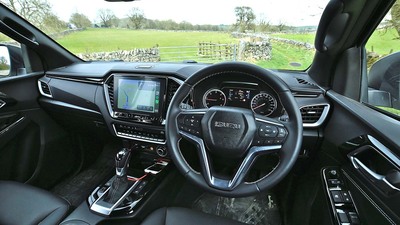
Verdict
The new pickups are evolutionary, rather than revolutionary. The manufacturer has taken the best bits of the old gen and added a welcomed amount of refinement to the top spec models while still providing a blue collar, no thrills version.
However, with all remaining pickup marques pushing past 200hp, the engine in the D-Max now feels somewhat lacking.



















